Hi there! Have you wondered if your diamond is real? Lucky you! Authenticate those sparkling jewels. Our complete guide will help you how to tell if diamonds are real and give yourself peace of mind.
Diamond experts understand how vital it is to verify your valuable diamond. With so many diamond alternatives and imitations, it can be tough. No worries—we’ve got you. This post from BrighterGuide will explain diamond authenticity testing and how to spot fake diamonds.
Let’s begin!
Related Article: Jared Jewelers Diamond Review Buyers Guide
Key Takeaways
- Verifying a diamond’s authenticity involves a combination of physical examinations and specific tests.
- Synthetic diamonds share the same properties with natural diamonds but are lab-created, offering a sustainable alternative.
- While at-home tests like the fog test and refractivity check can indicate a diamond’s genuineness, consulting a diamond expert or professional jeweler ensures comprehensive verification.
How to Verify Diamond Authenticity
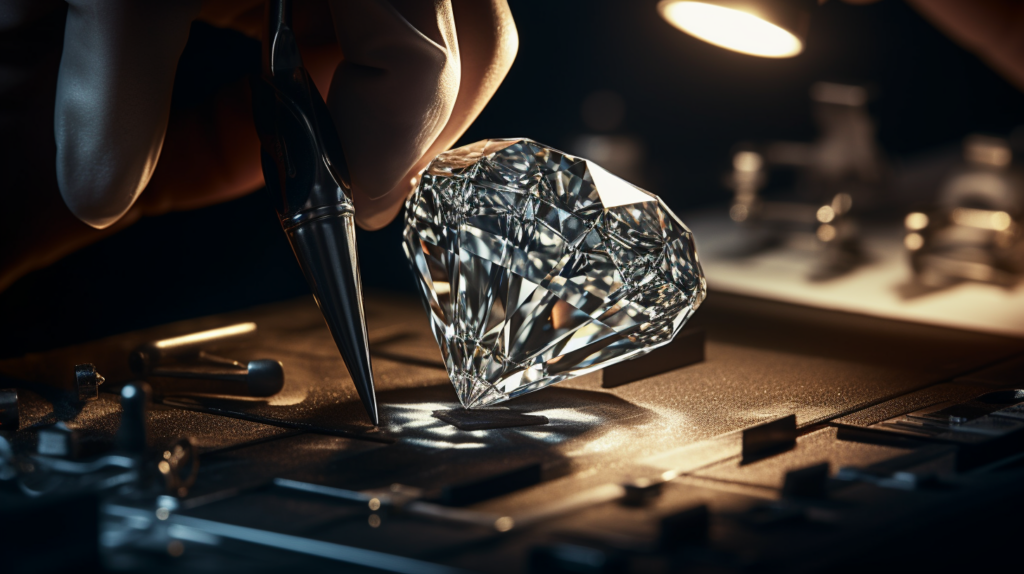
There are numerous ways to how to tell if diamonds are real. With many synthetic stones and diamond counterparts out there, ensuring you have a true diamond is essential.
- Simple tests at home: Place the stone in question on a piece of white paper with black lines. If the line underneath the diamond blurs or fades, it’s likely real.
- Compare the diamond’s weight (or carat weight) against standard diamond sizing charts. Genuine diamonds have specific weight and size parameters.
- The breath or fog test: Breathe onto the diamond. If the moisture or fog disappears rapidly, it’s probably a natural diamond because of its high thermal conductivity.
- When you touch your tongue to the diamond, it should feel cold due to its ability to disperse heat efficiently.
- Examine your diamond with a powerful magnifying glass or 10x loupe. Natural inclusions or minor blemishes are often present in authentic diamonds, whereas a fake stone might lack these.
With these tests, you can be a step closer to setting your mind at ease about your diamond’s authenticity.
The Types of Fake Diamonds
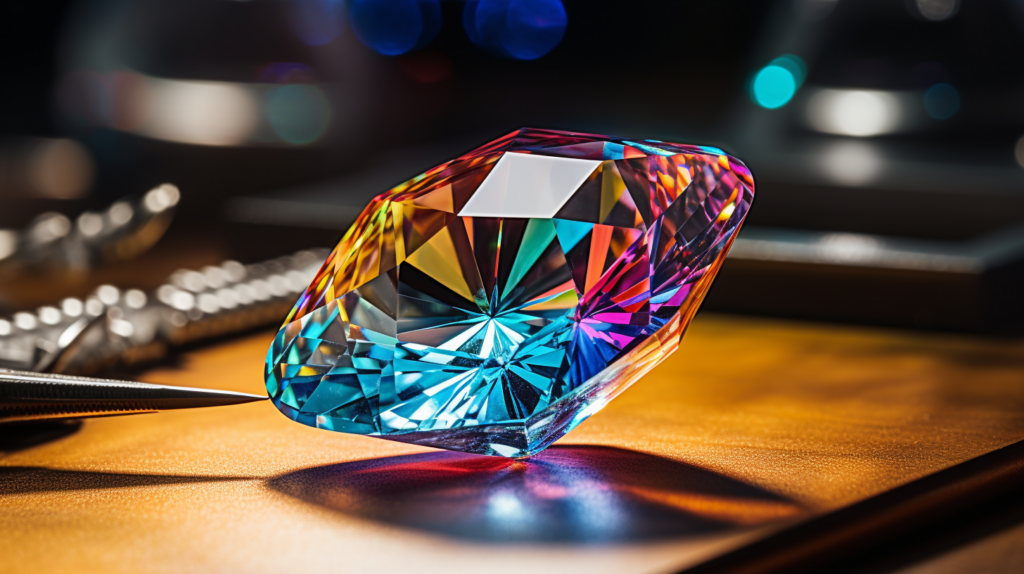
Here, we’ll contrast fake diamonds to the real diamond by evaluating their distinct characteristics.
| Fake Diamonds | Characteristics |
| Synthetic Diamonds | Lab-grown diamonds that are produced artificially. They have the same chemical composition and physical properties as genuine diamonds. |
| Cubic Zirconia | A popular diamond alternative that resembles a diamond but is made of zirconium dioxide. It is less durable and has different optical properties compared to a genuine diamond. |
| Diamond Imitations | These imitations mimic the appearance of real diamonds but are made of different materials. They can include white topaz, moissanite, or glass. They lack the hardness and brilliance of genuine diamonds. |
By recognizing these imitations, you can navigate the diamond industry with confidence, ensuring you pick quality stones.
Apart from the already mentioned, another concern for many is the matter of loose diamonds. When purchasing loose diamonds, it’s crucial to be particularly vigilant. Loose diamonds, given their unmounted nature, can be harder to evaluate with a cursory glance, making them prime targets for counterfeiting. While many opt for these diamonds for custom jewelry or investment, ensuring their genuineness becomes paramount.
The appeal of flawless diamonds makes them particularly coveted, but this also means they are often mimicked using lab-created diamonds or other fake diamonds. Always remember that the diamond in question should be thoroughly scrutinized, preferably by a trusted gemologist, before making a purchase decision. This ensures that you’re investing in genuine, quality stones and not being misled by convincing imitations.
Synthetic Diamonds: Definition and Uses
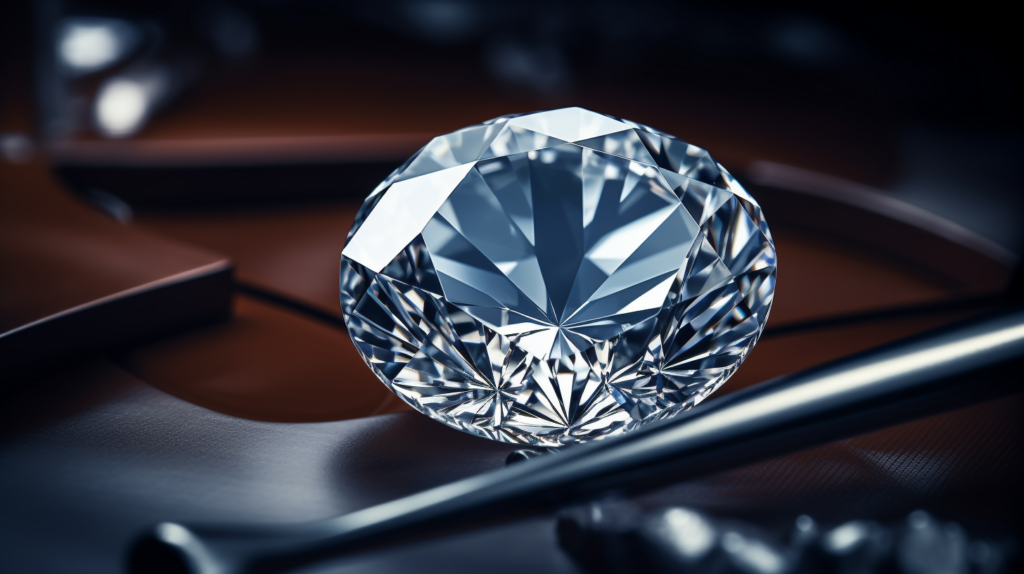
Synthetic diamonds are real diamonds created artificially in labs. They share the same chemical composition with natural diamonds but are man-made, making them an excellent alternative to natural ones.
Lab-grown and natural diamonds are difficult to distinguish in the diamond industry. You can verify the diamond’s legitimacy by comparing its weight and size, using a magnifying lens, or consulting a jeweler. The rise of synthetic diamonds showcases the marvels of modern technology. Made from synthetic materials, these diamonds blur the lines between what nature produces and what can be crafted in a lab.
While a natural gemstone has its unique allure, stemming from years of formation beneath the Earth’s crust, the appeal of synthetic diamonds is their consistency and often more affordable option for consumers. Especially in an era where ethical sourcing and sustainability are paramount, lab-grown diamonds offer a viable alternative without compromising on the beauty or quality traditionally associated with diamonds.
Home Diamond Refractivity Test
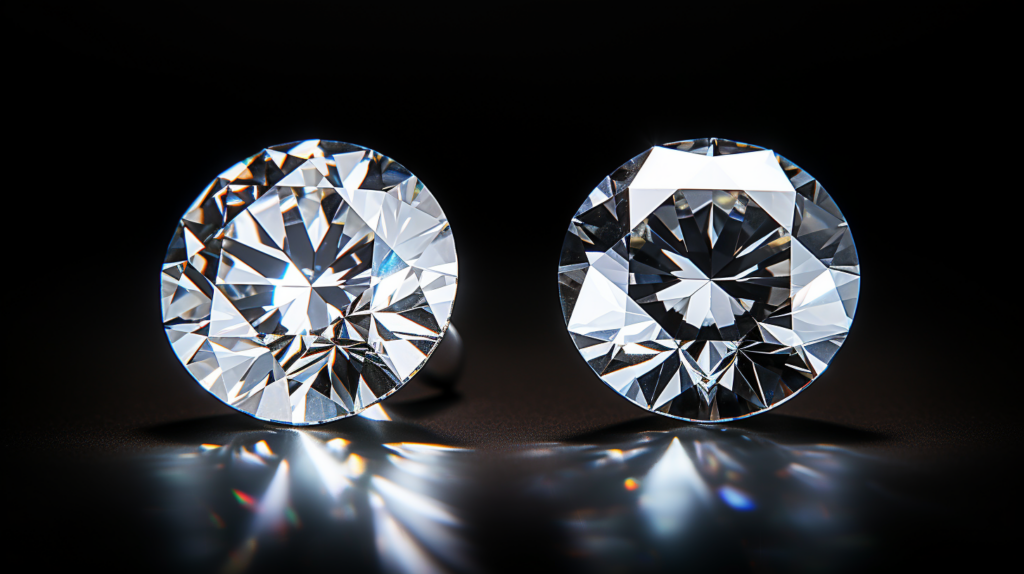
To discern a diamond’s genuineness at home, consider how it interacts with light. A diamond’s brilliance, or how it sparkles, can be a sign of its authenticity. Real diamonds, given their strong refractive properties, will always outshine cubic zirconia. Additionally, the fire test examines the color dispersion as light traverses the diamond. Genuine diamonds showcase a higher dispersion and produce a captivating rainbow of colors.
However, for the most accurate assessment of a diamond’s refractive characteristics, always consult a diamond professional equipped with advanced equipment.
Refractivity Tests for Diamond Authenticity
| Test | Description | Authenticity Indicator |
| Brilliance Test | Observing how the diamond sparkles and refracts light |
Genuine diamonds exhibit more brilliance compared to imitations |
| Fire Test | Looking for the dispersion of colors when light passes through the diamond |
Higher dispersion indicates a real diamond |
| Rainbow Effect Test | Rotating the diamond under a light source and observing if it displays a rainbow-like effect |
Dispersion is a characteristic of real diamonds |
Home Diamond Reflectivity Test
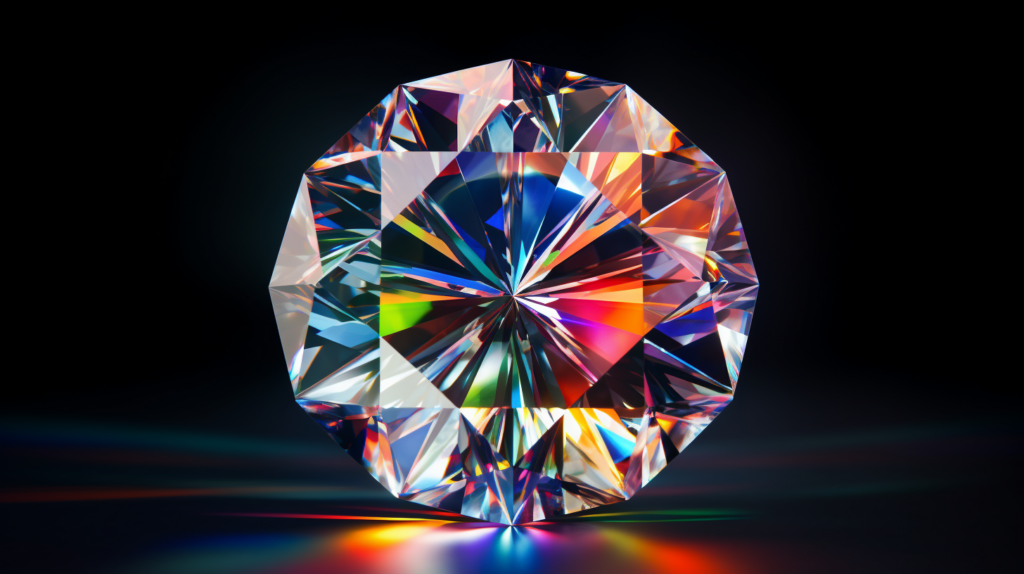
Reflectivity, or a diamond’s aptitude to reflect light, can also determine its authenticity. An uncomplicated reflectivity test involves placing the diamond on a piece of glass and observing its light reflection. Genuine diamonds exhibit a remarkable sparkle, particularly if set in white gold or yellow gold.
Submerging the diamond in cold water and assessing its light reflection can also serve as a test. Real diamonds excel at this.
Although these at-home tests can be indicative, always consult a reputable jeweler who can use specialized tools to examine the diamond in-depth, ensuring you’re getting a quality product at a reasonable price.
Expert Methods to Verify a Diamond
Diamond professionals utilize various methods on how to tell if diamonds are real. One of the best ways is consulting a trusted jeweler who uses specialized equipment to scrutinize the gem, providing reassurance that you’re investing in a genuine diamond.
Magnifying the stone is a widespread method. Genuine diamonds often contain inclusions or tiny mineral specks, which are typically absent in fake diamonds. Additionally, evaluating the diamond’s refractive qualities, brilliance, and thermal conductivity can also verify its authenticity.
Modern advancements have also introduced tools like diamond testers which use various techniques, from thermal testing to electrical conductivity, to differentiate between real and fake stones. The way a diamond interacts with white light can also offer insights into its authenticity. For instance, many genuine diamonds exhibit blue fluorescence when subjected to ultraviolet light, though it’s not a definitive test.
Additionally, observing how a diamond refracts colored light can give clues about its composition and origins. Pairing these advanced methods with traditional evaluations ensures a comprehensive approach to diamond verification.
Is the Scratch Test Reliable for Diamond Verification?
While prevalent, the scratch test isn’t a definitive diamond verification method. Scratching can damage a diamond, especially if done improperly, diminishing its value and appeal. Also, stones like moissanite and white sapphire, similar in hardness to diamonds, can erroneously be deemed as diamonds using this test.
Instead of relying solely on the scratch test, always consult a diamond expert or gemologist for a thorough and reliable diamond verification.
Check this out: Best Luxury Watches Under 5000
How to Tell a Real Diamond from a Non-Diamond Stone
Physical features and tests can help distinguish non-diamond stones from real ones. Black diamonds, while genuine, are scarce, so always seek an independent appraiser if in doubt. Glass stones might look like diamonds but lack their durability and hardness. Synthetic gemstones, although resembling diamonds, can be differentiated based on thermal conductivity and magnification.
For many, the dream is to own the perfect diamond, one that captures light just right and becomes a timeless piece in their collection. However, with the rise of lab diamonds, consumers now have more choices than ever before. Yet, regardless of its origin, a stunning diamond should always be the star of any piece of diamond jewelry. Ensuring its authenticity ensures its lasting value and beauty.
Conclusion
In essence, how to tell if diamonds are real require close attention to its physical attributes and specific tests. Whether you’re evaluating an engagement ring’s center stone or a jewelry item’s faceted gemstone, being able to confidently ascertain a diamond’s genuineness is paramount.
Final Advice
For a comprehensive diamond evaluation, always consult a diamond expert or professional jeweler capable of conducting UV light, thermal conductivity, and magnification tests, among others, to verify a diamond’s authenticity.
The table below elucidates some methods professionals employ:
| Method | Description | Benefits |
| UV Light Test | Exposing the diamond to ultraviolet light and noting its reaction | Real diamonds glow blue, while fake diamonds might not |
| Thermal Conductivity Test | Measuring how efficiently diamonds conduct heat | Diamonds have exceptional thermal properties, a low reading might indicate a fake |
| Magnification Test | Using a jeweler’s loupe or microscope to check for defects | This offers an in-depth examination of the diamond’s purity and unique attributes |
| Refraction Test | Placing the stone on a newspaper to see if the text gets distorted | Genuine diamonds refract light differently, while fakes might deform the text |
| Optical Properties Assessment | Evaluating a diamond’s brilliance, fire, and light performance | Genuine diamonds have unmatched brilliance, color dispersion, and a mesmerizing rainbow-like effect when rotated |
Sources
BrighterGuide is dedicated to providing accurate and relevant information as you explore the wonderful world of diamonds and jewelry. To this end, our writers refer to primary information sources in building each article that appears on this website. These include, but are not limited to, published news articles, government portals, research papers, and more.
- Laboratory-Grown Diamonds (Diamonds grown in a lab) | GIA. (2023b, September 15). GIA 4Cs. https://4cs.gia.edu/en-us/laboratory-grown-diamond
- Sivovolenko, S., Shelementiev, Y., Holloway, G., & Zipa, K. (2013). How diamond performance attributes: brilliance, scintillation and fire depend on human vision features. ResearchGate. https://www.researchgate.net/publication/263843604_How_diamond_performance_attributes_brilliance_scintillation_and_fire_depend_on_human_vision_features